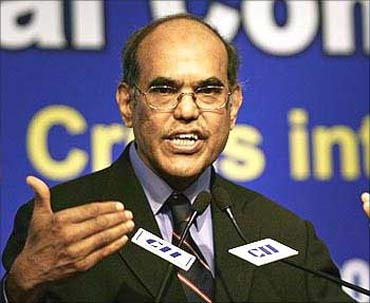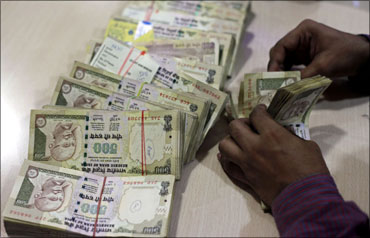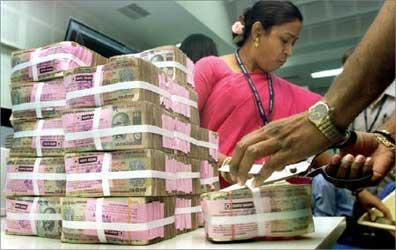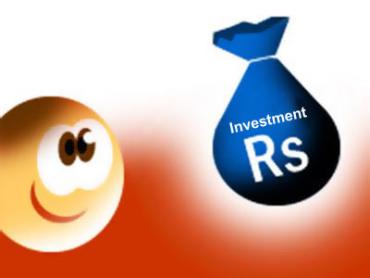How freeing the savings bank rate will help
Last updated on: May 2, 2011 17:47 IST
The case for deregulation of the savings bank deposit rate by the Reserve Bank of India (RBI) is becoming stronger day by day. It is time India returned to a system favoured by most modern economies around the world.
The giant steps taken in banking reform have not only significantly improved industry health but also the effectiveness of the regulator.
Click NEXT to read on
How freeing the savings bank rate will help
Last updated on: May 2, 2011 17:47 IST
So this last vestige of old-style regulation is more of a psychological prop which can be safely removed without fear of mishap.
The chief concern of the regulator in contemplating the move is whether it will put greater pressure on weak banks and, thus, create avoidable trouble for the regulator and the banks' significant owner, the government.
Click NEXT to read on
How freeing the savings bank rate will help
Last updated on: May 2, 2011 17:47 IST
Freeing the savings bank rate may heighten competition, forcing weaker banks to pay more than they can comfortably do.
With banks competing for deposits both on price and quality of service, weak banks, which lag behind in service quality, will have to rely largely on paying more, which will further weaken them.
Click NEXT to read on
How freeing the savings bank rate will help
Last updated on: May 2, 2011 17:47 IST
Thus, the deregulation will highlight weaknesses and force the owner and the regulator to take steps that will either get operations to improve or force takeover. This will end the camouflaging of weaknesses and lead to a systemic improvement.
Long-neglected small depositors should look forward to the freeing of the savings bank rate because it will give them a chance to get a bit more of their money's worth.
There is, of course, a chance that a splurge of liquidity will cause the rate to go down and not up.
Click NEXT to read on
How freeing the savings bank rate will help
Last updated on: May 2, 2011 17:47 IST
However, since the depositor is already living with high negative interest rates, prospects of a further downslide are limited. What will be new is that there would be a possibility of an upward movement.
The main concern of the regulator should be twofold: protecting the interests of small depositors and using the deregulation to take inclusive banking forward.
Click NEXT to read on
How freeing the savings bank rate will help
Last updated on: May 2, 2011 17:47 IST
To address these, an incentive needs to be created for those outside the banking system to convert whatever modest resources they have into financial savings.
One way of doing that can be for the government to give an interest subsidy to small deposits, maybe by limiting it to the first Rs 10,000 in a savings bank account.
Click NEXT to read on
How freeing the savings bank rate will help
Last updated on: May 2, 2011 17:47 IST
The policy should aim at limiting to the minimum, if not eliminate altogether, negative interest rates so that the poor do not find the value of their most crucial savings which they keep in a readily accessible form for emergencies going down.
It is not as though the government is not bailing out weak banks and their stakeholders.
Click NEXT to read on
How freeing the savings bank rate will help
Last updated on: May 2, 2011 17:47 IST
Every time they are recapitalised, after they have lost a part of their capital through provisioning for bad loans, the culture of going easy on bad loans continues, and banks remain protected.
Most importantly, modestly attractive interest earnings for small depositors, made possible by deregulation and subsidy, will significantly raise the national savings rate in the long run.
Source:










